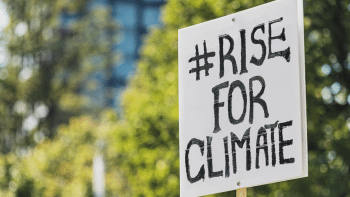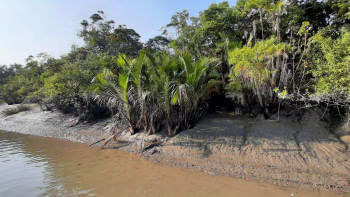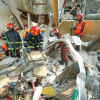Making Khulna a green and fair climate city

I have just returned from a visit to the Khulna region, both Khulna city and the Sundarbans. With the Padma Bridge cutting down the journey between Dhaka and Khulna to just a few hours means that the Khulna region is already seeing development at a much faster rate than before. This has both positive and potentially negative results – if we don't take care to avoid making mistakes during the development.
We can develop Khulna city into a green and fair climate city going forward.
The first aspect I want to discuss is the Sundarbans, the largest mangrove forest in the world. The Sundarbans is a Unesco World Heritage site as well as a Ramsar wetlands site, which Bangladesh has the responsibility to conserve not just for its own well-being, but on behalf of humanity. During my visit, I participated in a roundtable discussion with key stakeholders from the Forest Department, Department of Fisheries, Department of Environment (DoE), and the divisional commissioner's office, where we discussed how to improve the conservation of both the terrestrial and aquatic biodiversity, as well as support the communities living around the forest.
The first lesson we shared was the impressive progress that Bangladesh has made in improving biodiversity conservation, which is shown by the relatively frequent sighting of Bengal tigers in recent times. There has also been significant advancement in setting up conservation committees at grassroots level who are supporting the Forest Department in preventing poaching and illegal tree felling in exchange for some benefits. There are also efforts to develop sustainable and responsible tourism in place of the free-for-all approach that seems to be happening with irresponsible tourism. The bottom line is that while good progress has indeed been achieved, there is still much that needs to be done to ensure that the benefits are not lost.
The key elements that need to be further developed and improved are supporting the local conservation groups to motivate them, while imposing restrictions on irresponsible tourists who cause pollution and disturb the wildlife in the forest as well as its peripheral area, which is a designated Environmentally Critical Area (ECA).
The good news is that we know what needs to be done. If we can collectively do this, we can make the southwestern part of Bangladesh one of the world's foremost places to implement nature-based solutions (NbS).
The key elements that need to be further developed and improved are supporting the local conservation groups to motivate them, while imposing restrictions on irresponsible tourists who cause pollution and disturb the wildlife in the forest as well as its peripheral area, which is a designated Environmentally Critical Area (ECA).
The second aspect of the Khulna region that is relevant to climate change is its extreme vulnerability to salinity intrusion in the low-lying coastal districts, which are already causing displacement of the local people. This is in fact an instance of loss and damage from human-induced climate change, which we need to address as we invest in making Khulna city both a green and a fair climate city, particularly for the climate migrants who are rapidly filling up the slums in Khulna city.
This will require us to develop the city through what is called Just Urban Transition (JUT), which is a relatively new concept of ensuring both a green and a socially just urban development pathway. In Khulna's case, it must be ensured that the upcoming investments in the city infrastructure are more people-centric and not just infrastructure-oriented. Again, the good news is that we know what needs to be done – we just have to make sure we do it.
The final aspect is the potential for adaptation to climate change in the entire southwestern part of the country, with a particular emphasis on promoting Locally Led Adaptation (LLA). In fact, the second meeting I attended during my trip was to launch the Khulna Divisional Platform on LLA, which is part of the National Platform on LLA where all the stakeholders working on different aspects of LLA will come together to share their knowledge, experience and activities. This is being launched at the divisional level first this year, with the national platform due to be launched next year in Dhaka. This will bring both the government and non-governmental stakeholders together to ensure a truly whole-of-society approach to building resilience to tackle climate change impacts in Khulna and the surrounding areas.
In conclusion, the southwestern part of Bangladesh, with Khulna city at its core and the Sundarbans nearby, has the potential to become a global centre of green and just development if all the actors play their parts, and if we implement the Strategic Environmental Assessment (SEA) plan that has been prepared for the region.
Dr Saleemul Huq is director of the International Centre for Climate Change and Development (ICCCAD) at Independent University, Bangladesh (IUB).

 For all latest news, follow The Daily Star's Google News channel.
For all latest news, follow The Daily Star's Google News channel. 











Comments